Metadata
Instructions for adding, filtering, and modifying metadata in the app UI.
Developer guide: Metadata
Metadata is non-annotation information about an asset. You can use metadata to search and filter your data rows in Labelbox. The metadata schema lives at the organization level. This allows you to apply the same metadata fields across multiple datasets.
There are two types of metadata: reserved fields (user cannot change) and custom (user-defined) fields.
Reserved fields
By default, Labelbox defines several metadata fields on your data rows. You don't have to use these fields; however, you cannot delete or rename these fields. (You can change the field values.)
Each metadata field has a unique schema ID used to upload data to Labelbox.
| Name | Type |
|---|---|
tag | Free text field |
split | Enum - [train, valid, test] |
captureDateTime | ISO 8601 datetime field. All times must be in UTC |
embedding | A 128 length list 32 bit floats used for similarity search. All datarows share the same similarity index |
Custom fields
All metadata is strictly typed. These are the custom fields Labelbox offers.
| Type | Notes | Filtering |
|---|---|---|
DateTime | An ISO 8601 datetime field. All times must be in UTC timezone | Equals, greater than, less than, between |
Number | Floating-point value (max: 64-bit float) | Greater than & less than |
String | free text field. Max 4,096 characters. | Equals & prefix matching |
Enum | Enum field with options. Multiple options can be imported. | Equals |
Option (Enum) | Option of an enum. Max 64 options can be created per Enum type. 128 for enterprise customers and can be further increased upon request. | Equals |
Embedding | 128 float 32 vector used for similarity |
To view your metadata schema, go to the Schema tab and then select the Metadata subtab.
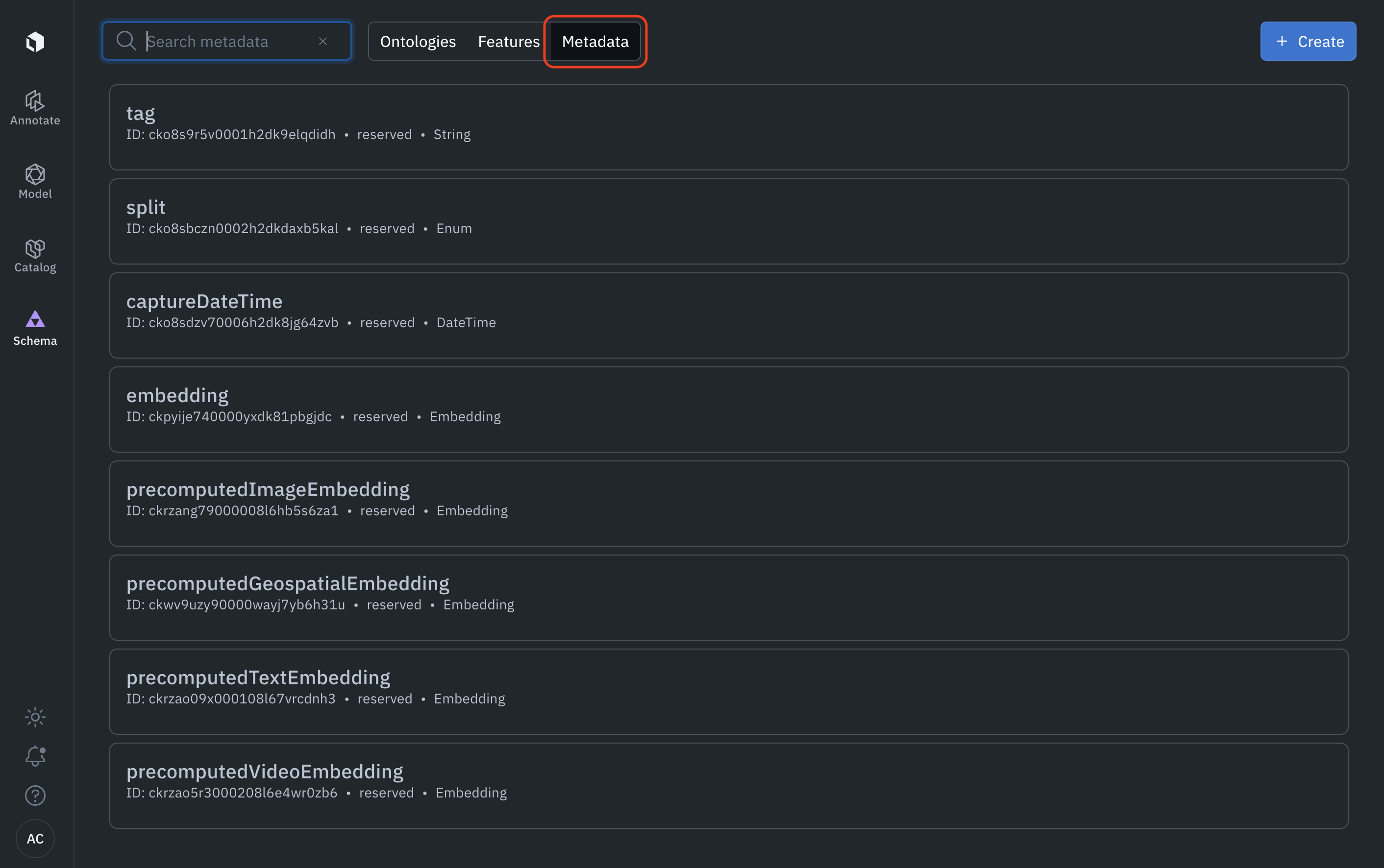
Create custom metadata schema via the UI
To create custom metadata fields via the UI, go to the Schema tab. Select Create.
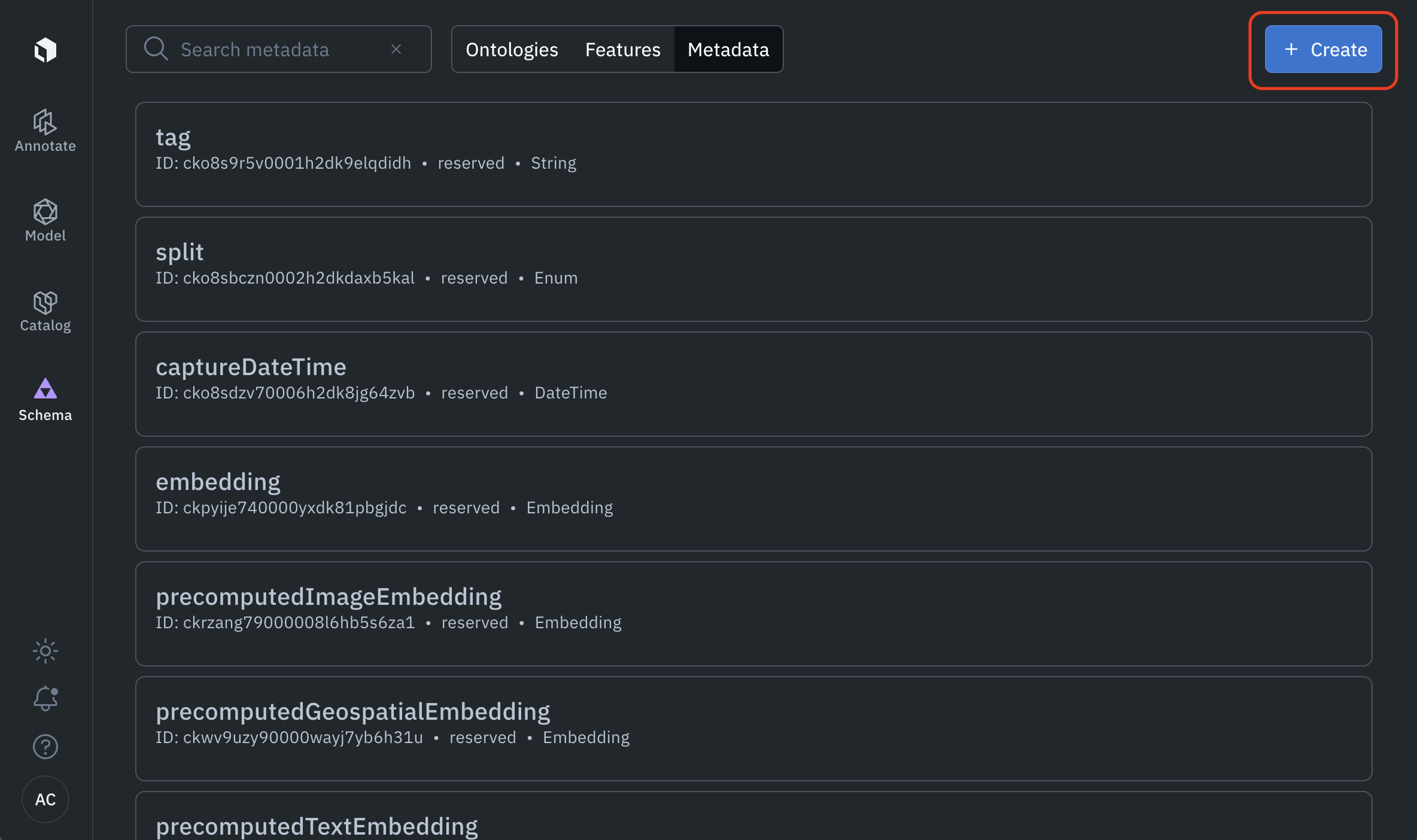
Each metadata field must have a unique name and a type. The max number of fields per organization is determined by account tier.
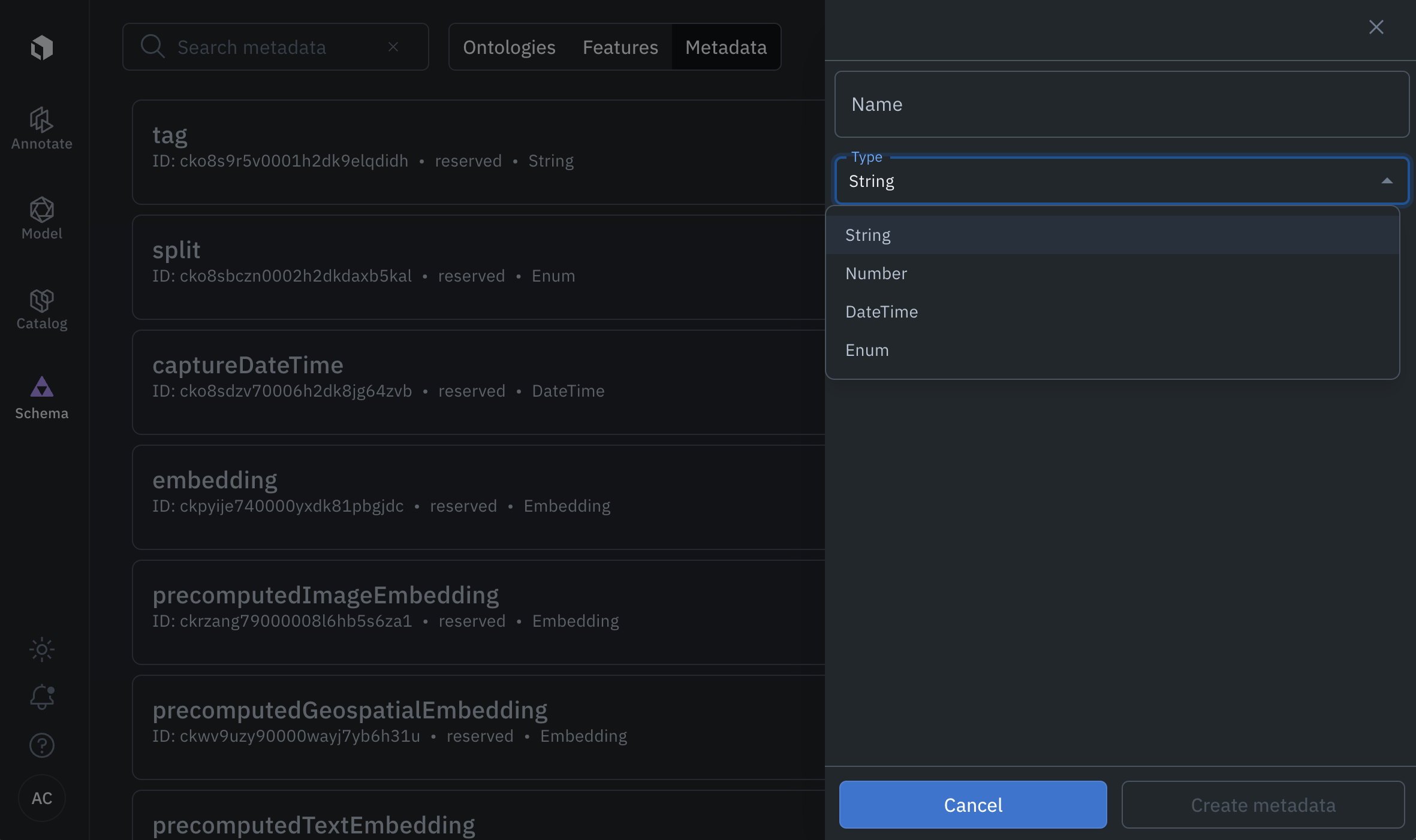
Metadata field limit
Know your account limits of maximum number of allowed metadata fields.
Once you create a field, you cannot change the type. You can modify the names of custom metadata schema by clicking the Edit button in the detail view of each schema. You cannot modify the names of reserved fields.
Update custom metadata schema via the UI
Go to the Schema tab to update custom metadata fields via the UI. Then, find the metadata you want to modify and click the Edit button.
Limits
Only the following can be updated:
- the name of custom metadata for non-reserved metadata
- the name of options for Enum metadata
Bulk add metadata
Follow these steps to bulk add metadata to your data rows in Catalog.
Limits
See this page to learn the limits for bulk adding metadata to data rows in Catalog.
Step 1: Select data rows
You will need to select a curated subset of data.
For example, you may select a cluster of data from the projector view. Another option could be to select the top results of a natural language search. This way, you can use neural networks like CLIP as zero-shot classifiers. A third possibility is to select all assets that look similar to each other - thanks to Labelbox similarity search. Similarity search powered by embeddings allows you to leverage any off-the-shelf neural network as a zero-shot classifier.
There are three ways to select data rows:
- Option 1: Select all filtered data rows by choosing Select all.
- Option 2: Use the selection icon (checkbox) to manually select individual data rows.
- Option 3: Bulk select data rows by selecting the first data row, press and hold
Shift, and then select the last data row. All data rows between the first and last ones are selected.
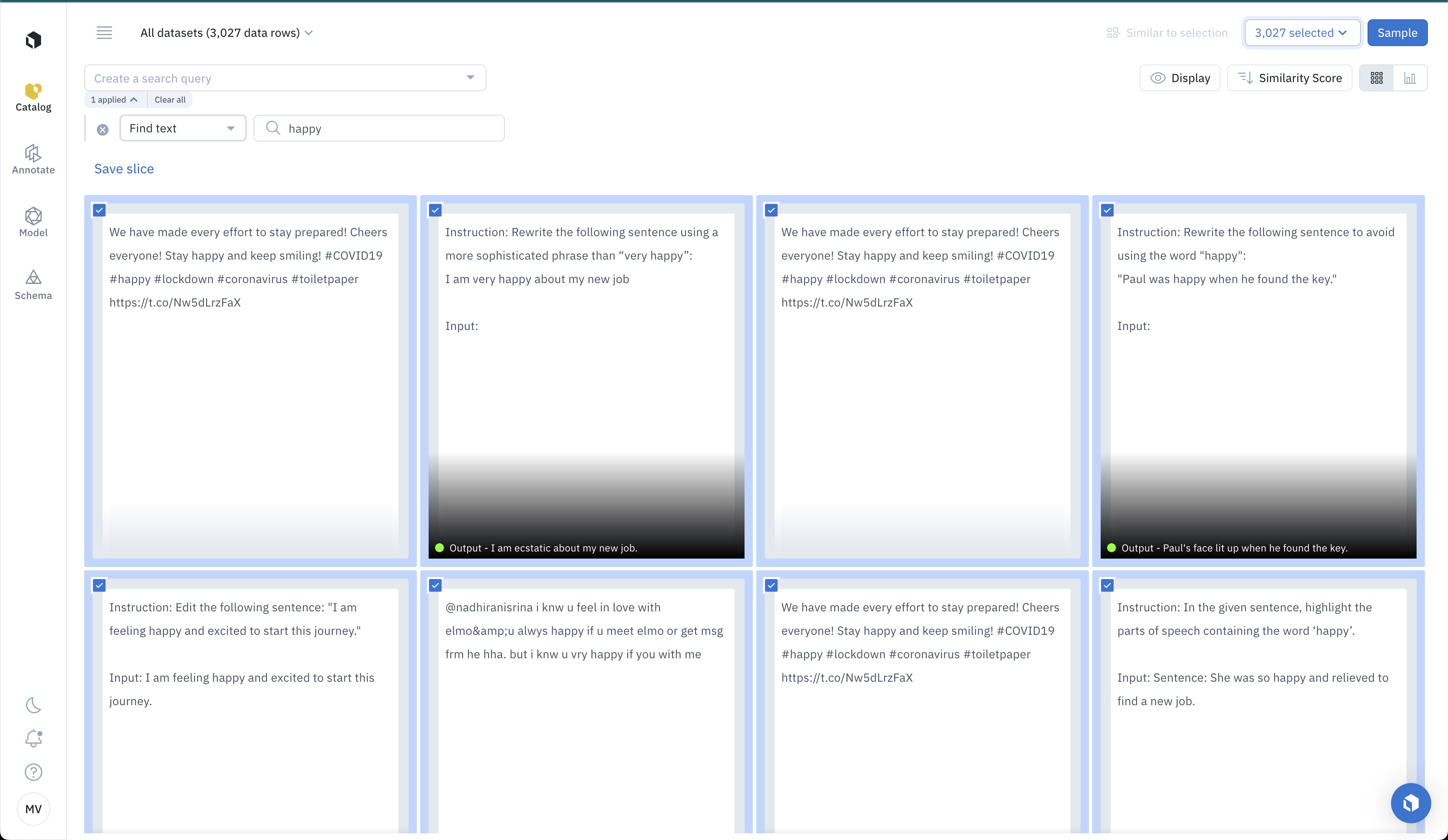
In this example, we select all data rows containing the keyword "happy"
Step 2: Add metadata
After you select your data rows, select Add metadata from the selection menu.

Step 3: Pick a metadata field
From the selection menu, select the metadata field you want to apply.
You can search for metadata fields by typing their name if you don't see them in the dropdown.
Metadata fields must be exist in Labelbox beore they appear in the menu.
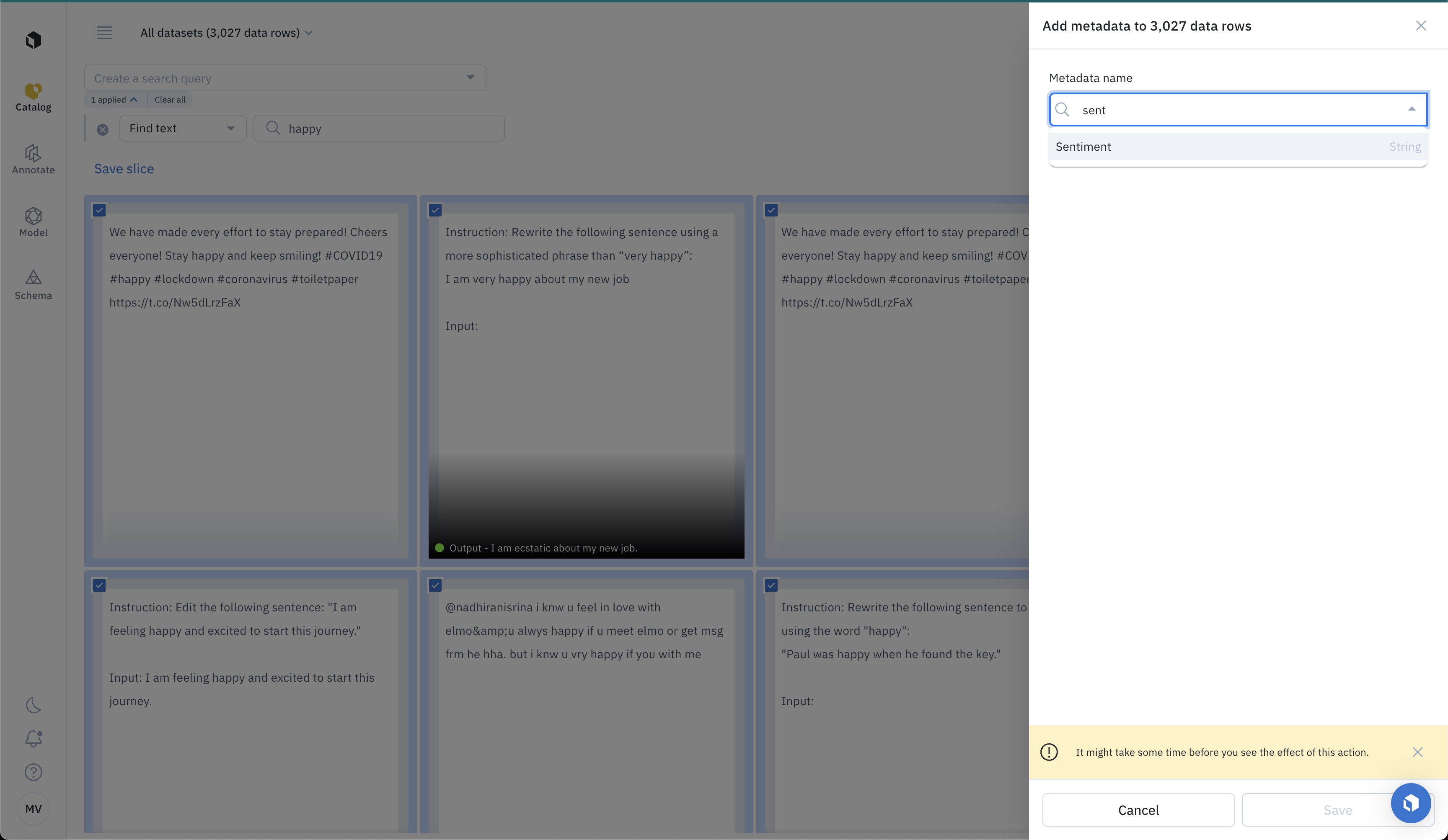
Step 4: Provide metadata values
Enter a metadata value. This metadata field and value will apply to all selected data rows.
Choose Save to apply the metadata in bulk. Changes can take time to be reflected in the data row metadata.
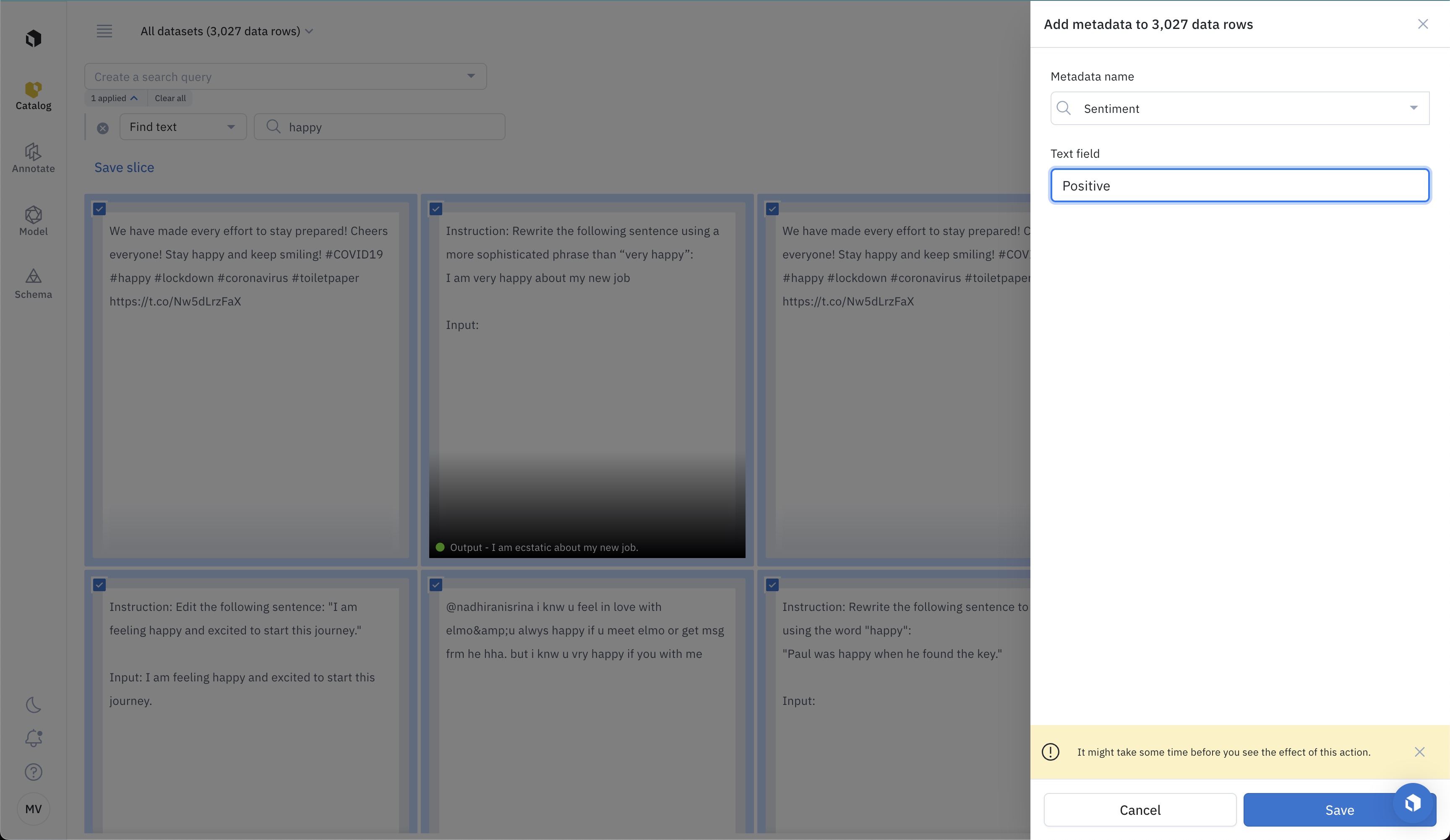
Here, all data rows containing the keyword "happy" are tagged as "Sentiment > Positive"
View metadata
You can surface data rows with the new metadata values, by searching on metadata in Labelbox.

Here, only data rows with the metadata field "Sentiment" and value "Positive" are displayed.
The newly created metadata tag will also show up in the detailed view.
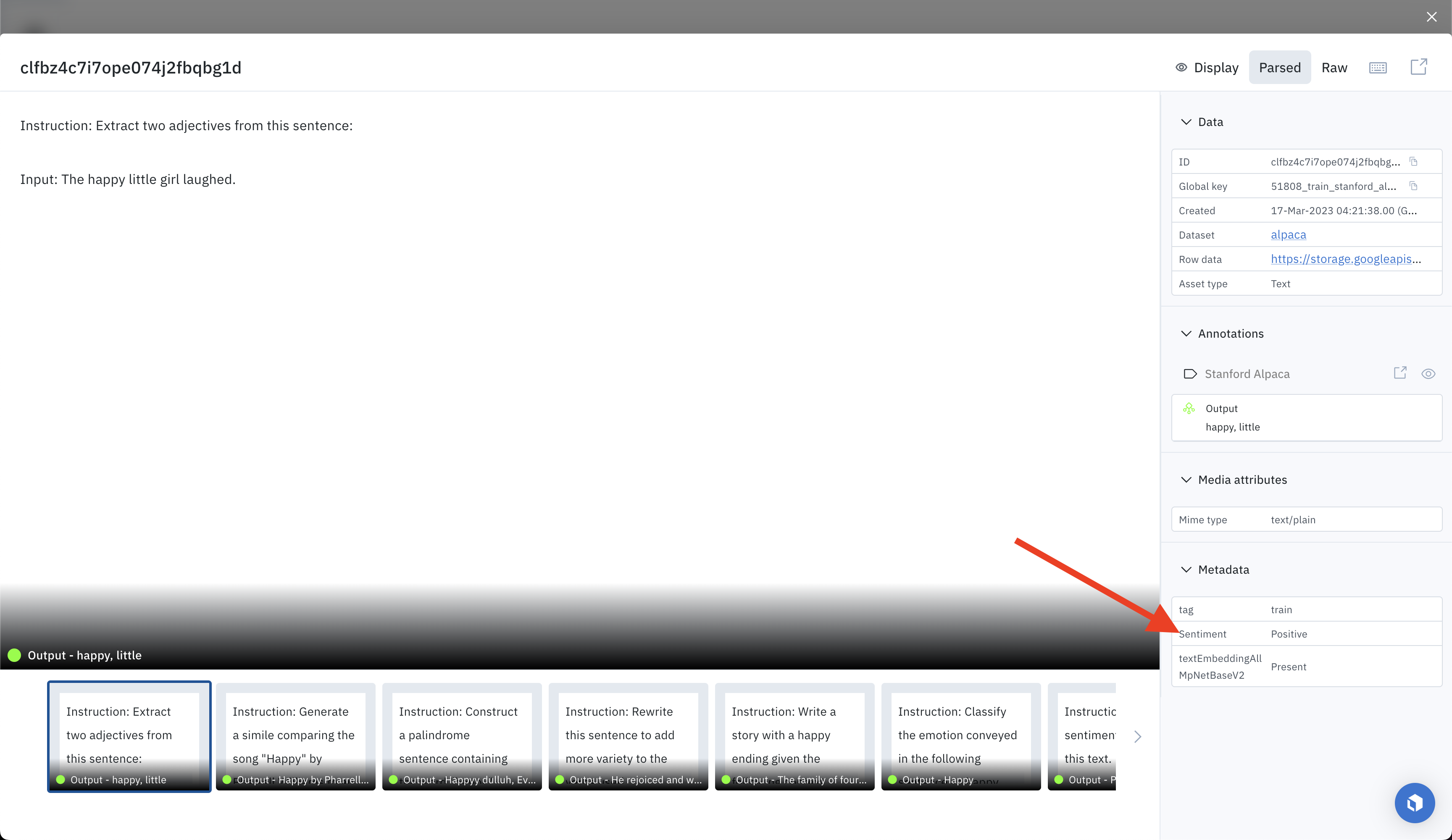
Filter metadata
Once you upload your metadata, you can easily filter and view metadata in Catalog. If you want to label this set of data rows, you can filter by that metadata field and send them to a labeling project as a batch.
Metadata viewing access
Labelers cannot filter and view metadata in Catalog. However, labelers will be able to view metadata information in the data row information panel.
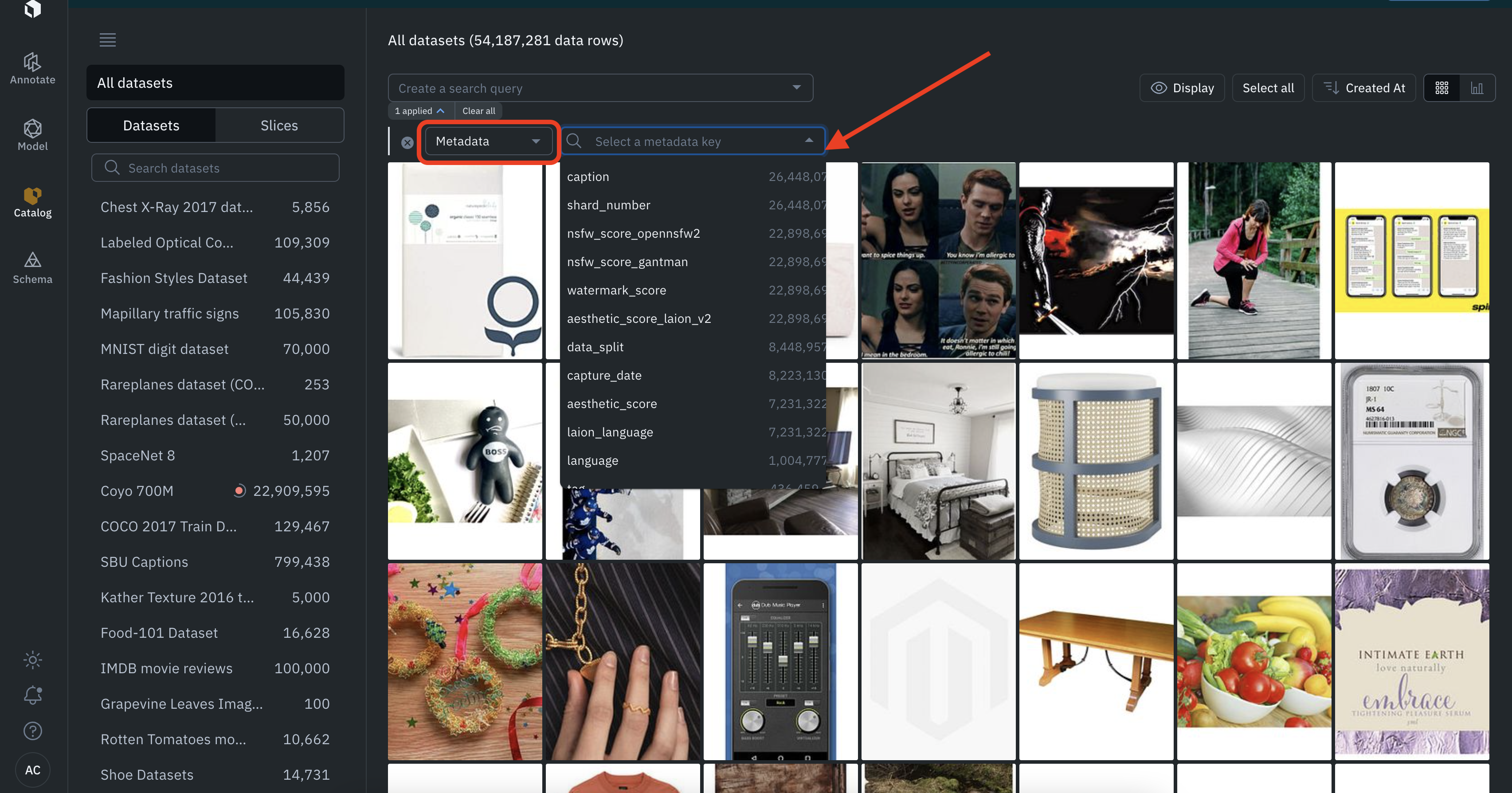
Select a data row to open its detailed view. The Metadata panel shows all current metadata.
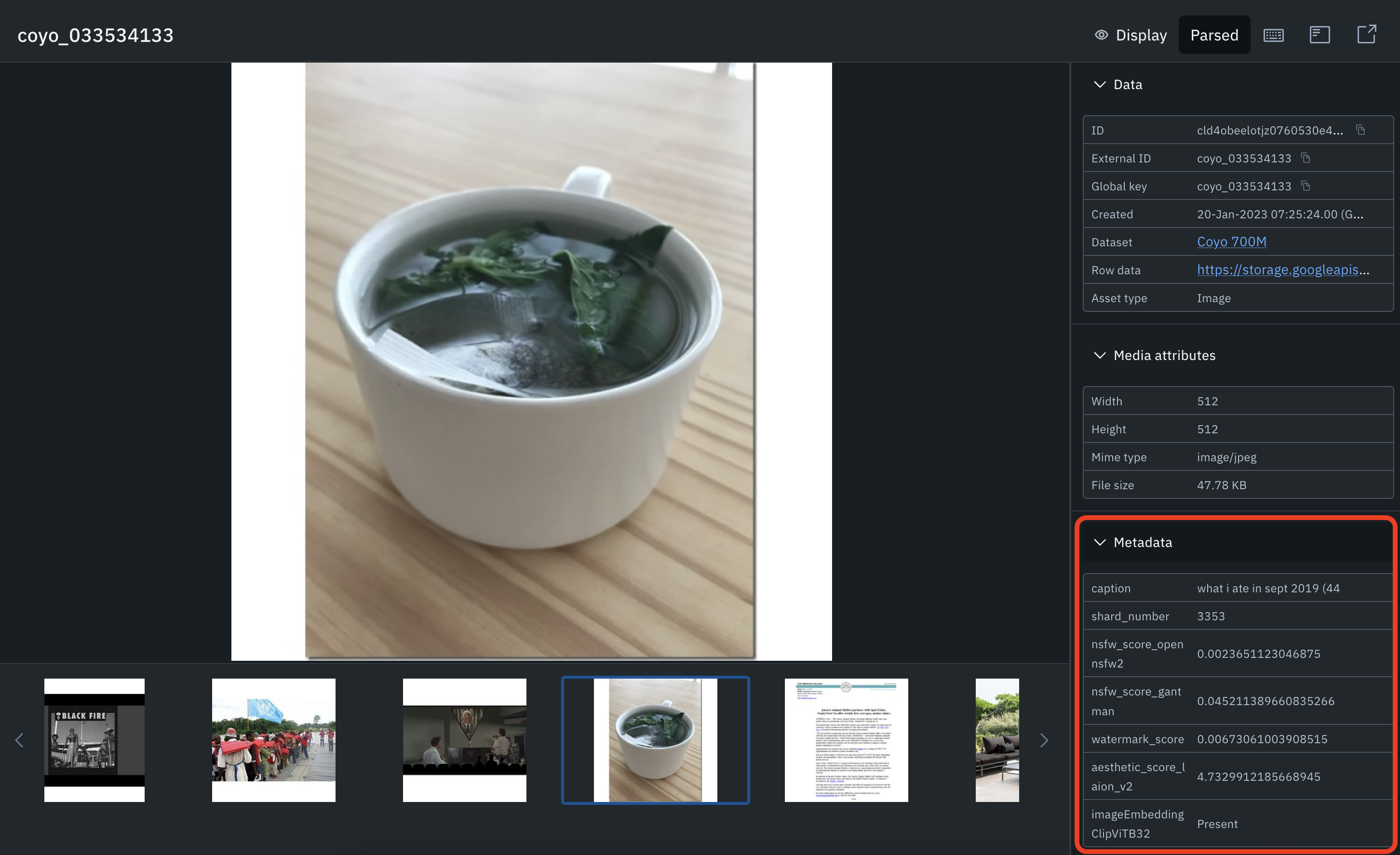
Export metadata
When you export your metadata, you can sync the newly created metadata with any outside system such as a cloud bucket, data lake, data warehouse, or database. To learn how to export data rows containing metadata, see Export from catalog.
Delete metadata
You can delete metadata for a data row through the SDK. Visit this guide for instructions.
Updated 3 months ago